General accounting
III. 13. Posting transactions (part 2)
Video
We are now at the heart of double-entry accounting. To make life simple, we consider a shop which buys goods and sells them without any manufacturing work on them.
The articles handled by the shop have two prices:
- a purchasing price, paid by the shop to a manufacturer, or a wholesaler
- a selling price to the clients.
Typically, the selling price is about twice the purchasing price.
Notice that firms are also tax collectors and there is usually a "value added tax" (VAT) charged on top of the selling price to clients. We shall study VAT later. For the time being, we work in an economic environment without VAT.
Keep in mind the objectives of accounting:
- Accounting is one of the Management Information Systems (MIS) of the firm
- Its first purpose is to compute over what's called "accounting periods" (usually calendar years) the profit generated by the firm. Its computation will be naturally enough
Profit of the period = Sales of the period - corresponding costs
We shall see in subsequent lessons how this computation is actually done. For the time being we must concentrate on how we post transactions into accounts.
- The second purpose of accounting is to give, at any point in time (but most usually at the end of each accounting period), a view of "where we stand", in the sense of "what the firm owns and what the firm owes".
One last comment before we post transactions: from now on, for a while, we shall distinguish cash on the premises and money at the bank:
- cash on the premises will be recorded in the "cash account"
- money at the bank, in a checking account on which we can draw cheques, will be recorded in the "bank account"
Let's start with posting simple transactions.
When posting a transaction the problem always is "In which account should I enter a debit, and in which account should I enter a credit?"
Example 1: At the end of a month, say on September 30, the firm pays salaries, 25 000€, by check
Let's see what are the two movements of value. That's how we figure out which account to debit (the account recording value coming in, whether it is consumed or not makes no difference), and which account to credit (the one recording value leaving)
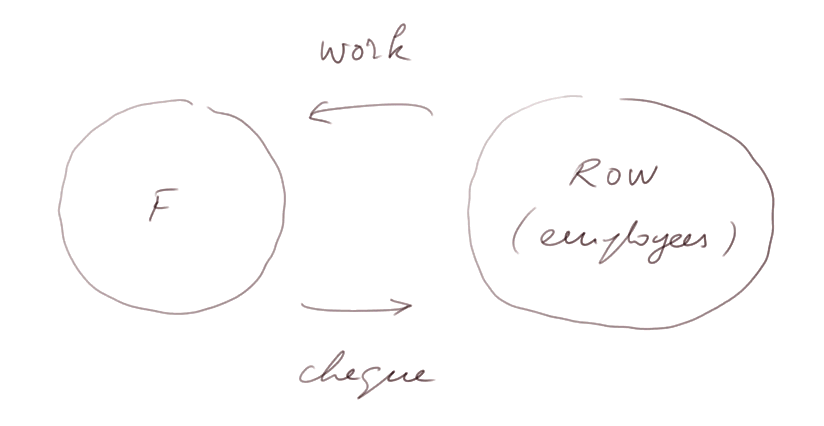
The work which came in during the month of September is recorded in an account called "Salary". There were some past entries which are already recorded in the account. And we make an entry with date = Sept 30, description = "salaries paid by cheque" (only the word cheque is important; specifying that it is salaries is redundant since we are in the "Salary account"), and in the debit column we enter 25000.
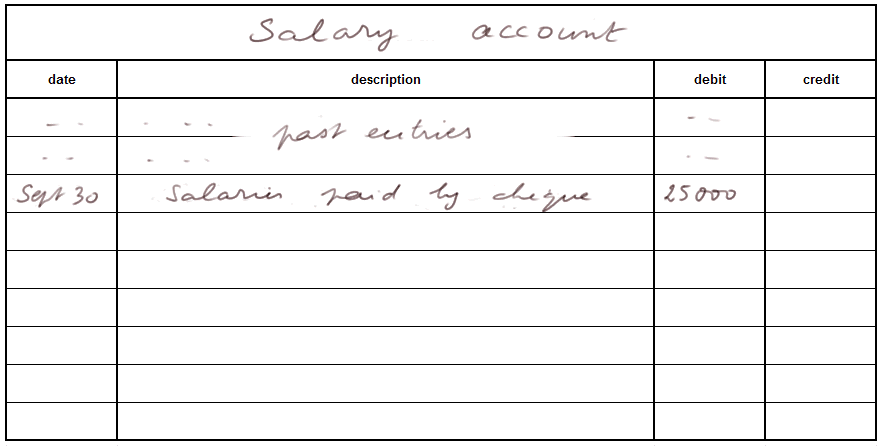
Note that even though this account is called "Salary account", what it actually records is work which came in.
The money paying the salaries (which of course has the same monetary measure) will be recorded in the "Bank account":

Example 2: A client, which had given us, some time ago, an IOU, now actually pays. Suppose this takes place on October 15. The client, her name is Jennifer, pays cash 3000€ to replace the IOU of 3000€ we held from her.
The two movements of the transaction are represented below:
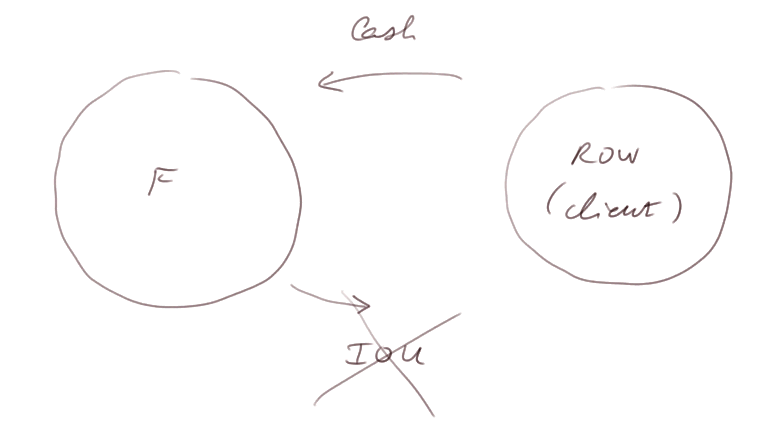
Cash enters the firm, and the IOU leaves the firm. Its value vanishes when Jennifer actually pays.
So we debit the cash account, because it receives value:
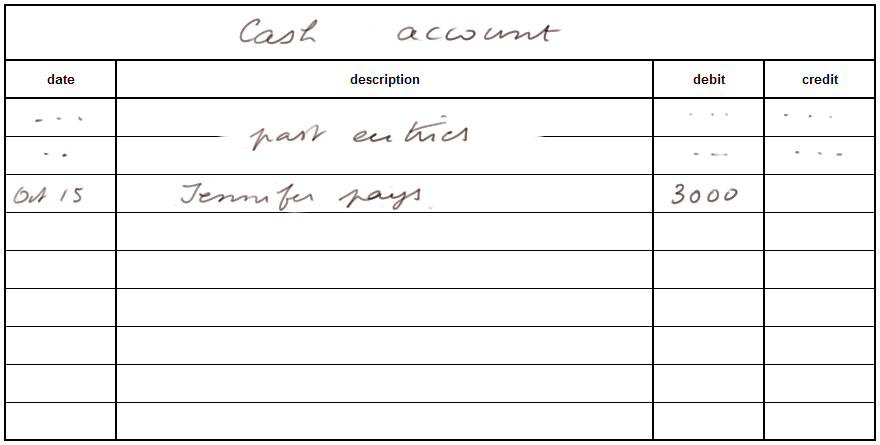
And we turn to the "debtors account". There was an entry in the past which recorded Jennifer's IOU. We saw that we do not erase this entry, because accounting is a process of recording information. We don't want to discard any. And we make a new entry on Oct 15 in the credit column, to record that the IOU is no longer in our assets.
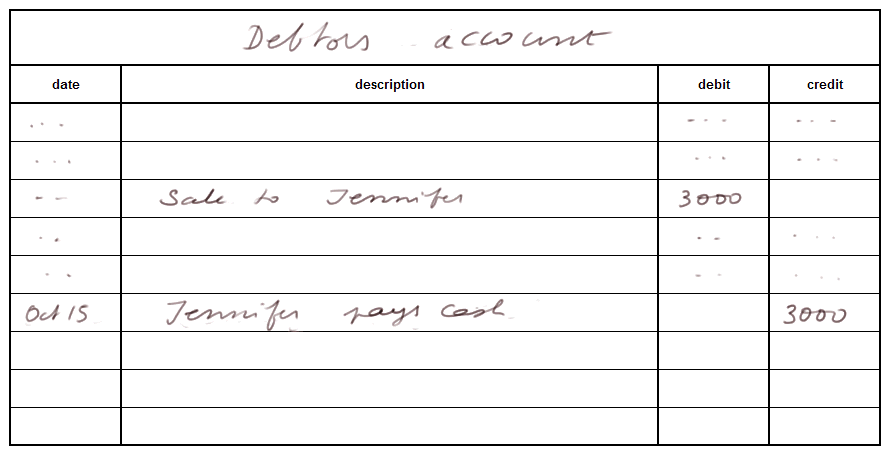
Example 3: On October 20, we sell goods to Marcel, 12 000€, and Marcel pays cash.
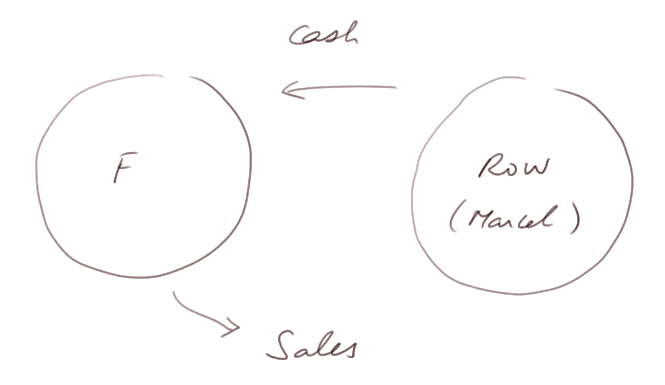
Cash enters the firm, and we saw that Italian merchants invented a special account called "Sales" to record a credit corresponding to this sale. It is not exactly the goods leaving the firm; this will be taken care of elsewhere.
Since Marcel pays cash, we don't really need to record from whom the money comes. It is important only when we receive an IOU. However, in managerial accounting (which is the development of general accounting with much more detail), it is an important piece of information for the MIS monitoring the selling activity.
We debit the "Cash account":
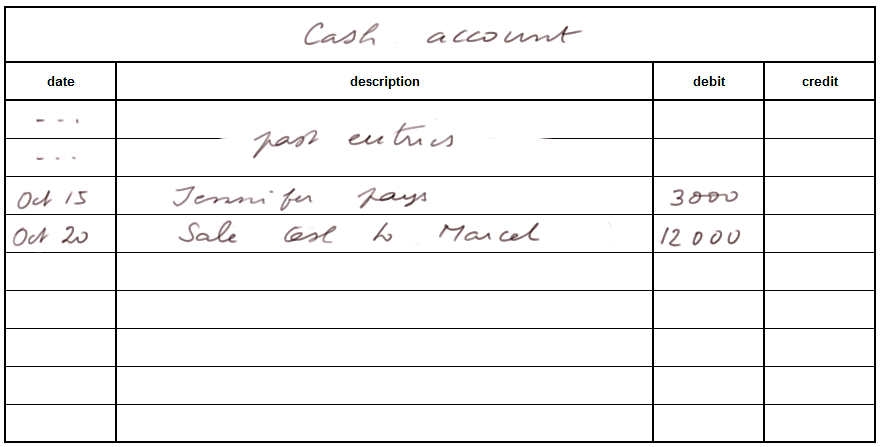
And we credit the "Sales account":
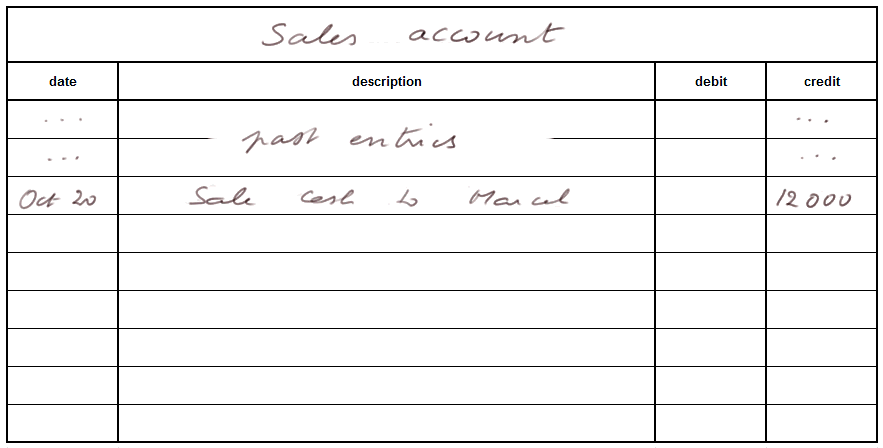
The problem of the goods sold. What to do, in this sale, with the goods actually leaving the firm and going to Marcel's?
In accounting, there are two ways to handle this:
- in modern accounting, we monitor in real time the inventory of goods: so we would credit the inventory and debit another special account called "Cost of Goods Sold" (COGS)
- in traditional accounting, this is taken care of later, at the end of the accounting period as a part of procedures called "year-end adjustements". We shall study them in a forthcoming lesson.
Let's keep to traditional accounting, so right now we do nothing concerning the goods which left the inventory of the firm and were sold to Marcel.
Example 4: On October 23, we purchase goods from Mary on credit for 7500€.
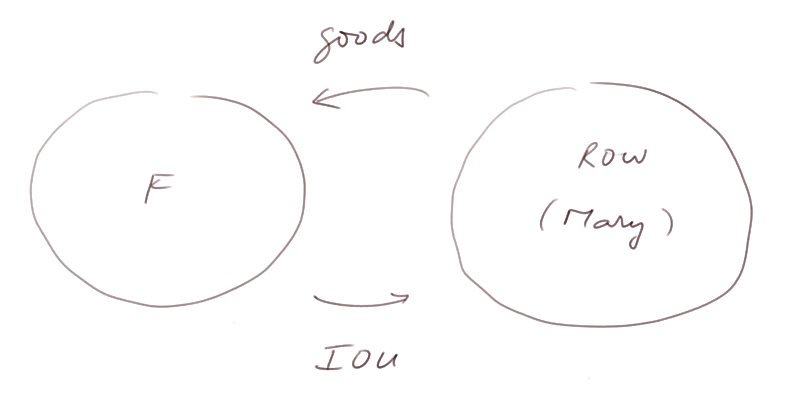
There again there are two ways to treat this transaction:
- in modern accounting, we would debit the inventory of goods to be sold, and credit whichever account is used to pay
- while in traditional accounting, we debit an account called "Purchases", and credit whichever account is used to pay
Let's keep again to traditional accounting. We shall debit the account called "Purchases", and later on, during the "year-end adjustments" we will compute the actual cost of the goods sold. If between the beginning and the end of the year, the inventory value doesn't change, this will mean that purchases = cost of goods sold. But if, for instance, between the beginning and the end of the year the inventory increases, then the goods actually sold are less than the purchases. This may sound awfully complicated right now, but we will see that traditional accounting solves the problem nicely and simply in the "year-end adjustments".
So, for the time being, we debit the "Purchases account":
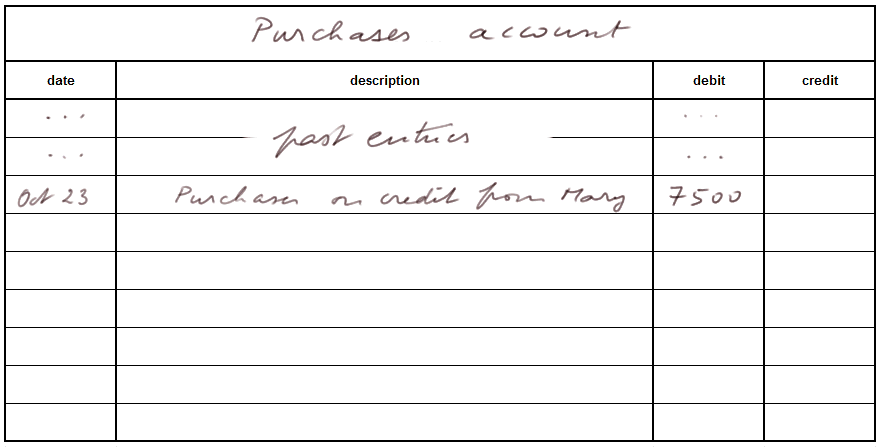
And we credit the account which was used to pay. Here it is the "Creditors account", since we pay with an IOU:
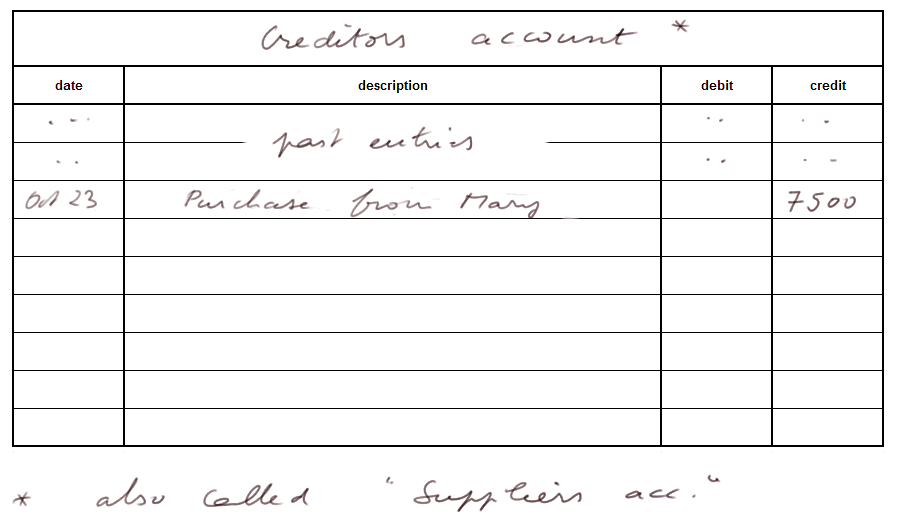
How to learn all this? It would be excessive to pretend that all this is very simple and straightforward. Only practice will enable you to develop the right reflexes, and become at ease with the debits and credits with which we post transactions.



